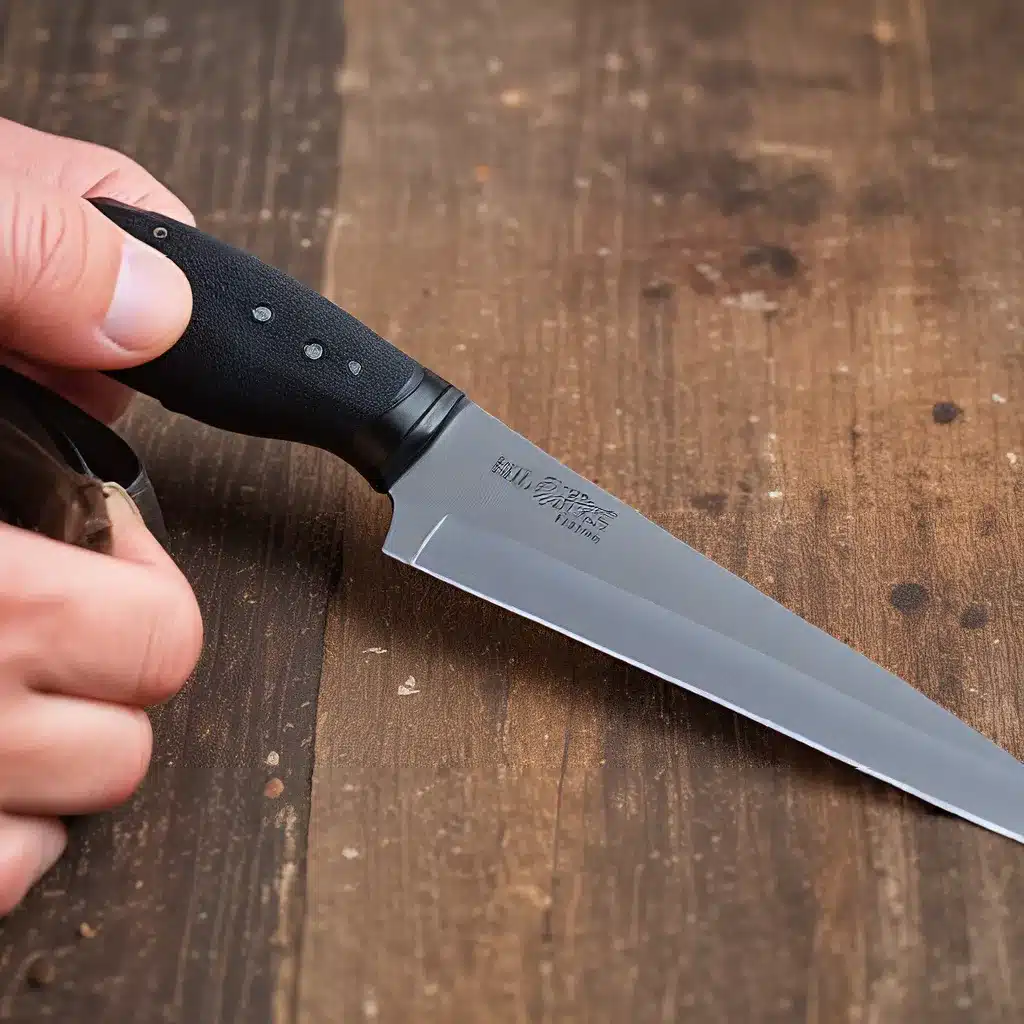
Unlocking the Secret to Longevity: Proper Knife Maintenance
As a passionate home chef, I’ve come to understand that a well-cared-for knife is the cornerstone of any successful culinary endeavor. Whether you’re slicing through juicy tomatoes, dicing onions, or meticulously filleting that fresh catch of the day, the performance and longevity of your blades are paramount. In this in-depth article, I’ll share the essential tips and techniques I’ve learned for keeping my knives in tip-top shape, ensuring they serve me faithfully for years to come.
Stainless Steel Blades: A Delicate Balance
Stainless steel knives are a popular choice for their durability and resistance to corrosion, but they do require a bit of extra care and attention. All stainless steel contains some level of carbon, which is crucial for maintaining sharpness and optimal performance. However, this carbon content can also lead to the development of a light hue if the blade is not properly cleaned and dried.
To keep your stainless steel knives looking their best, always hand wash them with warm, soapy water and avoid using abrasive sponges or pads. Dry the blade thoroughly with an absorbent towel, preferably a paper towel, to ensure no residual moisture remains. Never put your stainless steel knives in the dishwasher or leave them soaking in water, as this can lead to discoloration and premature wear.
For optimal storage, consider using a magnetic wooden strip to keep your knives protected and easily accessible. Alternatively, you can store them in a knife roll or wrap them in a protective saya to prevent any damage to the blades.
Taming the Temperamental: Caring for Carbon Steel
While stainless steel knives are relatively low-maintenance, carbon steel blades require a bit more attention. These knives are particularly reactive to acidic ingredients, such as citrus, tomatoes, and onions. It’s imperative that you rinse the blade and wipe it dry immediately after cutting these items, as the acid can quickly corrode the steel and damage the blade.
After washing and drying your carbon steel knife, I recommend applying a thin layer of food-safe knife wax or neutral oil, such as camellia oil, to create a protective barrier against future exposure to moisture and acids. This will help encourage a slow and even patina, adding to the knife’s unique character over time.
When oiling the blade, be careful not to directly touch the edge with your fingers. Instead, apply a small amount of oil to a thick towel and gently run it over the edge to help keep the knife sharper for longer.
Maintain that Razor’s Edge: Sharpening and Honing
Regardless of the type of knife you own, regular sharpening and honing are essential for ensuring optimal performance and longevity. I recommend having your knives professionally sharpened at least once a year, even if you’re sharpening them at home yourself.
If you do sharpen your own knives, be sure to use the proper techniques and tools. Avoid machine sharpening, as these methods can be too abrasive, remove too much steel, and even heat up the blade, potentially damaging the structure of the steel.
In between professional sharpening, a leather strop and honing rod can be used to help maintain a sharp and even edge. Honing rods do not sharpen the knife but rather remove microscopic bits of steel, helping to true the edge and keep it in top condition.
Embracing the Unexpected: Navigating Knife Patina
One of the unique joys of owning a carbon steel knife is the development of a natural patina over time. This patina is a result of the blade’s interaction with the various foods and ingredients it comes in contact with, and it can add to the knife’s character and history.
While some may view the patina as a sign of wear and tear, I like to see it as a badge of honor, a testament to the knife’s hard-earned experience. Embrace the patina and let it tell the story of your culinary adventures!
Sharpening the Mind: Exploring Knife Maintenance Resources
As with any skill, there’s always more to learn when it comes to caring for your knives. I encourage you to dive into the wealth of information available online and explore the various forums and communities dedicated to knife enthusiasts.
Knives Illustrated and Badger & Blade are just two examples of the many resources that can provide valuable insights and tips on proper knife care and maintenance.
Remember, caring for your knives is an ongoing journey, and with the right knowledge and techniques, you can ensure your blades stay sharp, beautiful, and ready to tackle any culinary challenge that comes your way.


